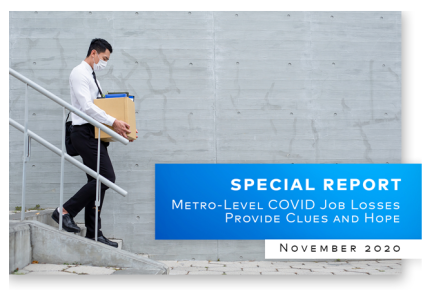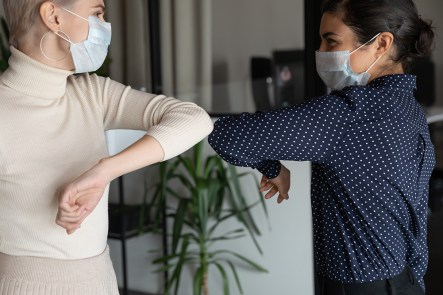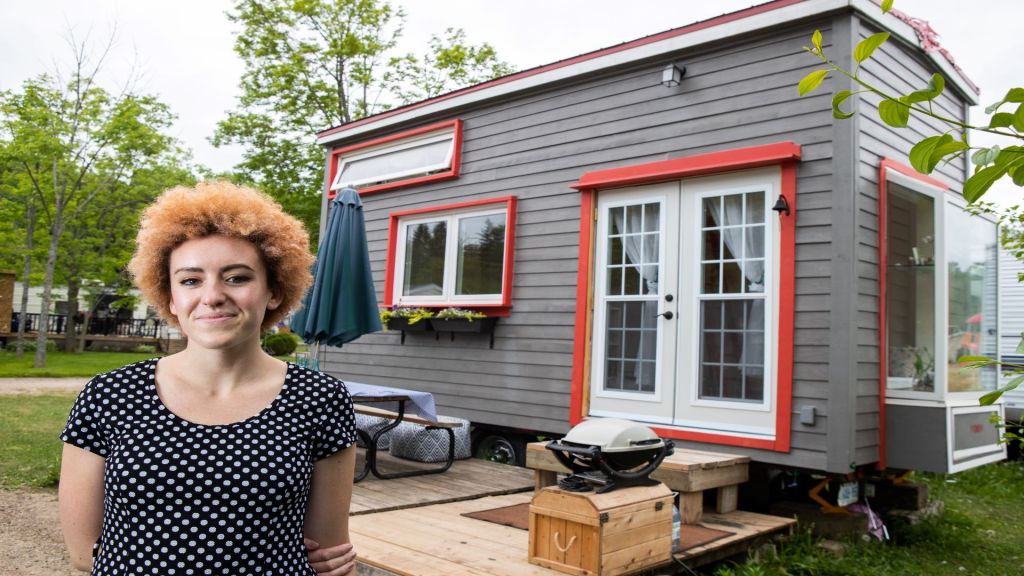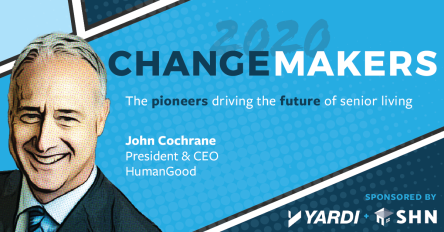Isolation is necessary to keep senior living community members healthy during the pandemic – and a challenge to their well-being in other ways. As HealthTech magazine put it, “Important safety measures to keep high-risk people isolated during the pandemic hold a particular disadvantage for older adults in assisted living.” While the absence of sustained interaction can’t be completely mitigated as COVID-19 runs its course, a number of collaboration tools give senior living community residents vital mental and physical stimulation plus social engagement with the outside world. “Advances in technology for senior living are more focused on improving quality of life, providing data that enhances housing and developing personal devices that give seniors more control over their environment,” according to Craig Fukushima, managing partner for The Fox Group LLC, a health care consulting firm in Upland, Calif. Many of the technology tools leveraged by older adults are familiar to the non-senior population: smartphones, tablets, videoconferencing, telehealth. HealthTech reports that residents at Connecticut-based Maplewood Senior Living, for example, use iPads for video chats, virtual cocktail hours and birthday parties. A Thrive Senior Living community in Germantown, Md., added Alexa-enabled voice control and smart speaker devices. And Seattle-area operator Merrill Gardens outfitted seven of its communities with devices that support video calls with family and activities such as virtual card games and trivia contests. Video games are another way to keep seniors active. Fitness trackers can help them count steps, compete in competitions and create workout routines. Other apps offer quizzes, puzzles and other stimulating activities. The gap between tech-savvy younger generations and their elders is narrower than some people might think. An AARP survey published in January 2020 revealed that 51% of older Americans bought a smartphone, smart television, wearable device or other tech product in...
2021 Outlook
Real Estate Forecast
For more than 40 years, PwC and the Urban Land Institute have produced a trends and forecast publication. The 2021 edition of Emerging Trends in Real Estate summarizes views gathered in interviews and surveys of more than 2,950 property owners, investors, fund managers, brokers and others in the U.S. and Canada. COVID-19 dominates virtually every examination of real estate, and Emerging Trends is no exception. Yardi Matrix reported, for example, that multifamily property sales through the third quarter were down more than 41% from the same period the previous year. Meanwhile, 33% of office-space decision-makers participating in a study sponsored by BOMA International, Yardi and Brightline Strategies reported experiencing at least a 25% revenue decline since the pandemic’s onset. Here are some highlights from the 111-page PwC/Urban Land Institute report: “COVID-19 has kicked real estate certainty to the ground,” the publication says, with confidence in future demand for many property types having dropped precipitously in 2020. But technology has eased adaptation to the drastic measures prompted by the pandemic. Millions of office workers successfully transferred to remote environments, for example. The report notes, “The WFH experiment has gone better than most managers and employees had expected, since new teleconference tools and advanced information technology systems have allowed for effective communication and collaboration.” Many who contributed to the report predict that measures adopted during the pandemic will continue when workers return to the office, including flexible hours, reduced shared spaces, ongoing enhancement of building environmental systems, and physical barriers. The report also speculates that some companies might consider abandoning the consolidated model of leasing and using office space in favor of a hub-and-spoke system with satellite offices. And, the report notes, “Significant opportunities to operate and manage buildings more efficiently are ahead as well,” as property management technology providers deliver solutions that “gather, organize, and use data to reduce costs, identify risks, and more proactively operate buildings; identify appropriate investment strategies; and better serve tenants.” Property owners are also likely to continue making investments in technologies that strengthen cybersecurity, ensure business continuity and assess a building’s compliance with heightened health standards. With companies increasingly focused on controlling costs, those investment will most likely target immediate critical necessities. Tech is also driving profound changes in the multifamily sector. The report quotes an unidentified major apartment landlord: “The pandemic changed how people lease apartments. Online tours and processes are now preferable, and while some reversion to in-person tours may occur, we believe that online interaction will be acceptable in most cases. Reluctance to adopt technology is a key challenge, and COVID has been an opportunity to change that.” Demand for smart-home technology such as touchless controls on sinks, motion sensor lights and voice commands also figures to increase, the report says. Yardi continues to dedicate special resources to help clients, employees and communities weather the COVID-19...
Pivotal Shifts
Emerging Multifamily Trends
There’s no way to introduce an article about the changes wrought by 2020 that doesn’t underplay the significance of the COVID-19 pandemic. It’s affected the way we do everything — limiting travel, increasing screen time and turning even the most basic activity into an exercise in risk management. For people in the multifamily industry, apartment rentals went from a typically high-touch experience to virtually contactless, seemingly overnight. And while some of the changes are only temporary, others are likely to last long after the virus abates. “This year is a pivotal moment that will reshape how we do business,” asserts Esther Bonardi, vice president of marketing here at Yardi. “The pandemic is changing our future. How can we use this for good?” Bonardi recently had the chance to talk with three multifamily leaders about their experiences marketing and leasing apartments during the pandemic. Hear from Garin Hamburger, senior director of national marketing at Pinnacle; Ian Mattingly, president of LumaCorp Inc.; and Pei Pei Mirabella, senior vice president of operations at Bozzuto on the emerging trends that will have the biggest impact on multifamily rentals going forward. Bonardi: What do you think was the biggest change in 2020 that has the most potential to become a permanent shift in the way we do business? Hamburger: The biggest change that will last through the pandemic and continue to evolve after it are the creation of alternative tour types, specifically virtual and self-guided tours. I really believe we’re coming into an age where technology will dramatically shift the customer journey and the leasing agent experience. Mirabella: The companies faring better during abrupt shutdowns have the tools and technology in place to pivot operations and enhance productivity while working remotely. In addition to using live and pre-recorded virtual...
Working from Home
When to update policies
In 2017, only 5.2% of Americans consistently worked from home. This summer, more than 51% of employed Americans transitioned to remote work environments. This means more time, tasks and responsibilities at home– and necessary updates to their renters insurance policies. Not sure if you need to update your policy? Check out the scenarios below to see if they apply to you. You have more frequent guests than usual Suzanne and her partner, Dave, are a blacksmiths who recently had to close their shop in the city. They hauled their equipment to the garage of Suzanne’s rental. The space is cramped and darker than they’re accustomed to, but things are working fine. Should Suzanne review her liability insurance policy? Yes! Her current liability coverage may be sufficient to cover most incidents in her rental house. Her coworker, however, will be in her rental more often than usual. The increased frequency of his visits along with using high-risk equipment in a less-than-ideal space may call for additional coverage. You have significantly more equipment or materials than usual Leanne is a professional bridesmaid. (Yes, they exist.) With limited access hours at her storage facility, she may have tens of thousands of dollars of wedding supplies or specialized equipment at her rental. Should Leanne review her personal property coverage? Yes! This is tricky, because while she did not pay for the items, they are her responsibility while in the unit. The cost of the items may exceed her typical renters insurance cost, warranting a policy update. Additionally, she will need to consider an actual cash value protection policy rather than replacement cost coverage. Actual cash value plans offer coverage up to items’ current market value. In contrast, replacement coverage replaces compromised items. This time-consuming process may be less...
Employment Impacts
New Yardi Matrix report
The COVID-19 pandemic has been inconsistent in the way it has affected the U.S. employment market, creating a wide disparity between metro and job segments. This is the main conclusion of the latest special employment report from Yardi Matrix. Leisure and hospitality was by far the biggest employment sector loser, with 3.8 million jobs lost. In contrast, only 1.8% of the jobs in financial services have been lost since the start of the pandemic. However, the overall impact varied greatly depending on the city. Metros with the best job performance include those with relatively small leisure and hospitality industries and those that have lost relatively few jobs in the segment (Indianapolis, for example, lost only 6.5%). One outlier, Austin, has added 8,200 professional and business services jobs and 7,300 financial services jobs since February. While the size of a metro’s leisure and hospitality segment is a key in the extent of job losses, a more significant factor is how thoroughly the metro shut down to stop the spread of COVID. Few of the top 10 metros in the percentage of jobs lost since February are among the leaders in leisure and hospitality jobs, but all are at or above the average proportion of jobs lost in the segment. New York City, for example, has a relatively small leisure and hospitality segment (9.8% of all jobs), but a whopping 42.3% of those jobs disappeared. “The data does show hope for the future for the gateway metros that have been hard hit, because the core industries in those metros, such as finance and professional services, remain viable,” states the report. “Once a vaccine is available and people feel safe going back to entertainment venues, restaurants and the like, gateway cities (like New York, San Francisco, Boston...
Long-Term Care
Pharmacy Partnership Begins
Registration has started for the Pharmacy Partnership for Long Term Care Program. This innovative collaboration facilitates free, on-premises COVID-19 vaccinations for senior living providers. CDC facilitates vaccination services for senior living residents The Center for Disease Control (CDC) has partnered with CVS and Walgreens pharmacies to offer vaccination services for residents of senior facilities. The new program, called Pharmacy Partnership for Long-term Care (LTC), “provides end-to-end management of the COVID-19 vaccination process, including cold chain management, on-site vaccinations, and fulfillment of reporting requirements, to facilitate safe vaccination of this patient population, while reducing burden on LTC facilities and jurisdictional health departments,” reports the CDC. Senior living providers gain free access to services such as: on-location clinic dates orders for the vaccine and necessary supplies vaccine administration cold chain management for the vaccine reporting to local, state and federal jurisdictions compliance with Centers for Medicare & Medicaid (CMS) COVID-19 testing requirements for LTCF staff Skilled Nursing facilities (SNF) must register through the National Healthcare Safety Network. Assisted living facilities (ALF) must register via REDcap. Registration is non-binding and facilitates may opt out at any time. What to expect during Pharmacy Partnership for Long-term Care registration Providers will have the opportunity to select between CVS and Walgreens as their pharmacy partner for the initial phase of the vaccinations. After the initial phase (about two months) facilities may chose a pharmacy provider of their choice. Online sign-up details will be disseminated through the providers’ communications channels including but not limited to websites and email. The CDC will coordinate facilities’ preferences with the pharmacy partners. Please be advised that the CDC may reassign facilities to accommodate availability and other considerations. Registrations for the program ends November 6. Explore FAQ regarding the Long-Term Care Program for COVID-19...
Flexibility Holds Key...
For future of CRE
COVID-19 has had a jarring impact on commercial real estate in the form of health risks, stunted growth prospects, permit and construction delays, reduced income for property owners and the acceleration of e-commerce at the expense of physical stores, among other disruptions. The pandemic precipitated what global management consultant firm McKinsey & Company calls “an unprecedented crisis for the real estate industry.” What will the CRE landscape look like when the pandemic fades? For one thing, new building codes designed to limit the risk of future pandemics could affect standards for HVAC, square footage per person and amount of enclosed space. Office building tenants will almost certainly be driven “to look beyond their traditional building preferences. In this new environment, tenants will gravitate towards the properties that best solve for flexibility, adaptability, and well-being,” according to Erin Saven and Evan Danchenka of Gensler, a global architecture, design and planning firm. Maria Sicola, a founding partner of real estate planning services provider CityStream Solutions and sales and training consultant Integrity Data Solutions, believes tenants will likely make their space “more personalized and less communal – we will likely not return to all-private offices and fancy conference rooms. But all space – personal and meeting — will need to be viewed with more breathing room.” And, of course, cleanliness will command more attention than ever. Commercial Property Executive predicts that “some products and techniques that have been used in medical office buildings and in hospitals are going to be brought to the office sector,” such as microbe-resistant door handles and elevator buttons and sanitation with ultraviolet light. Amenities as differentiators Building owners and developers, for their part, would be well advised to explore “new real estate design strategies that can differentiate them from the competition and...
Amenity Reset
For Multifamily
Amenities can be the irresistible lure that persuades apartment searchers to choose one community over another. Rooftop pools, fitness suites, concierge package service, housekeeping, business centers and dog wash stations all have devotees. “Over the past several years the multifamily asset class has been engaged in an amenities war, with projects offering better and more luxurious add-ons in order to draw in residents,” GlobeSt.com reported in April 2020. But COVID-19 prompted some apartment residents to rethink what matters to them, which in turn forced owners and managers to reevaluate their offerings. “Everybody is really searching for creative solutions right now,” Jeremy Brutus, co-founder of gym facility management company Urbn Play, told the New York Times in September. “I don’t think amenities will ever go back to the way they were before,” added Whitney Kraus of New York residential sales and leasing specialist Brown Harris Stevens Development. Several of the most common changes are fairly unobtrusive, such as lounges repurposed as schools, limited capacity in common areas, clubhouses divided into separate rooms, movable couches, touchless key fobs, cordoned-off work and recreation areas, and mandatory reservations for facilities. Package delivery and storage services and HVAC upgrades to make interior air cleaner are also in greater demand, according to Rick Haughey, vice president of industry technology initiatives for the National Multifamily Housing Council. Some communities have even swapped steel handles on barbells, weight machines and other equipment for copper, which is more expensive but harbors the coronavirus for a shorter time. Apartment communities on the high end of the rental scale, such as New York’s Madison House, can get even more creative with members-only primary care and emergency medical service offerings. Sollis Health, which services the building, says 50% of its business is house calls made by...
Remote Onboarding
Best Practices for Property Management
Working from home, remote work, telecommuting: whatever you call it, it’s a challenge for property managers across the nation. If you’re lucky enough to be hiring in during the pandemic, you’re also facing the challenge of onboarding in a remote work environment. It’s not easy. With the right tools, however, you can onboard new team members with ease and efficacy. Check out these recommendations from industry experts for remote onboarding, simplified. Just when you thought property management couldn’t get any harder… Property management is a notoriously tough business. The National Apartment Association reports an average turnover rate of 33% in 2019. The highest rates are for leasing and maintenance, at 31.9% and 39.2% respectively. With each vacant position comes the time and money spent on marketing, hiring and training. The time it takes to train a new employee varies. It’s safe to say, though, that hours spent training a revolving door of new hires isn’t an ideal use of your team’s time. When translated to dollars, it costs between $5,505.80 and $9,444.47 per turnover to replace an entry-level employee. High turnover is costly, time consuming and counterproductive. Then a pandemic arrives that complicates everything for everyone everywhere. Property managers who are lucky enough to hire must now do so without interviewing or training applicants in person. Teams attempt to build office culture and support with the same screens used for work and productivity. A career path that deters 33% of employees each year now faces additional challenges. Fortunately, robust e-learning software is here to help. What methods can help property managers overcome these challenges? Begin with the cloud. Cloud computing empowers property owners to implement e-learning and remotely train new hires. The system facilitates real-time collaboration between participants on documents and projects. Additionally, software that operates on integrated and centralized cloud storage is advantageous to a piecemeal assemblage of programs. Patricia Pomies is chief delivery officer at Globant, an innovator in workplace efficiencies. The cloud is a powerful tool because it provides 24/7 access to learning content. Remote, easy access is key for distance learning. “Their approach should be focused on promoting a culture of continuous learning, and training programs should live in one central, digital location for employees to access easily,” says Pomies. “It’s also best to give employees access to different learning experiences and training based on their time, interests, level and expertise—whether they are a remote employee or not.” Create online trainings that are branded and customizable. Consider a remote learning platform that enables branding and customization. Since your new hires won’t go into a physical office each day, it is essential to use branding to instill a sense of place and company culture. Customization ensures that your messaging within the e-learning platform is consistent with corporate messaging. Of equal importance, you will be able to customize learning modules based on the new hire’s role within the organization. This ensures that new hires can prioritize and specialize as needed. Customized content also encourages the most engagement from participants. Jim E. Guilkey, author and doctorate in instructional design and learning strategy, suggests that engagement improves problem-solving skills. In an interview with Society for Human Resource Management, Guilkey encourages clients to explore engaging options such as virtual collaboration rooms and role playing. “Instead of simply lecturing, put the impetus for learning on the learners,” he says. He recommends putting students in a virtual collaboration room to evaluate real and hypothetical situations pertinent to their roles. Together, they can analyze, troubleshoot and propose solutions and improvements. Rather than relying on industry standard, pre-set modules, customized courses provide hyper-local learning opportunities. Presenting scenarios specific to the brand, property or region create a stronger sense of place and culture for remote learners. Check for comprehension before assessments and analyze assessment data for additional learning opportunities. When teaching in person, an instructor can use body language to gauge whether content is “sinking in”...
Did COVID-19 Spark
A Renewables Renaissance?
Some industries, such as technology and online media, are doing well amid COVID-19, even as the pandemic cuts a swath through virtually every public health, political, social and economic structure. Other segments of the economy, such as travel and hospitality, face a perilous future. And what about the vital energy sector? Before the pandemic hit, energy demand was projected to grow 12% between 2019 and 2030, as developing nations broadened their power generation capacities. But COVID-19 “has brought the generation of energy from fossil fuels to breaking point,” says the World Economic Forum, with global energy demand declining by 5% in 2020. Despite a larger population and world economy, demand in 2050 will be about the same as it is today, according to risk management and quality assurance experts DNV GL, due partly to the effects of COVID-19. “The scale of the fall in demand, the speed of change, and how widespread it has been have generated a radical shift that seems to be more than a temporary short-term drop in demand for fossil fuels, at least in the power sector,” Nelson Mojarro, a World Economic Forum advisor, said in June. That development has opened the door for renewable energy generation to play an even more prominent role on the world energy scene. Renewables, including solar, whose cost has fallen by 82% over a decade, are the lowest-cost source of new power generation, according to the International Renewable Energy Agency. That trend is expected to hold over the foreseeable future. And COVID-19, Mojarro says, “has had a game-changing effect in accelerating the clean energy transition in the power sector.” Within 10 weeks of the start of widespread lockdowns, according to data compiled by the International Energy Agency, the U.S. increased its renewable energy consumption...
Looking at Liability
Protecting your property
As public health restrictions lift, many homes are welcoming loved ones, guests and clients again. The influx of visitors may have you second guessing your renters insurance policy. If you’ve wondered if you’re liable for COVID-19 transmitted while in your rental, read on. What is the “liability” part of your renters policy? Liability insurance is a specific field of coverage on your renters insurance policy. It protects you, the purchaser, from the risk of liability resulting from legal action. Such legal action may pertain to bodily injury or property damage that guests experience while at your home. When we think about liability insurance for rentals, slips and falls come to mind. If someone delivers a mattress to your house, trips and falls over an extension cord in the hallway, that’s a matter for your liability insurance. But what happens when the threat is unseen? Hundreds of flu seasons have come and gone since the advent of renters insurance. Few people, however, considered their liability if someone contracts an infectious disease while in their rental. Infectious diseases such as the common cold, flu and COVID-19 may cause bodily harm, but they are treated differently under liability insurance provisions. The liability of disease is a contentious topic: to what degree can a property owner or tenant protect occupants and guests? What measures are they required to take, legally or ethically? How precisely could guests pinpoint the exposure to the rental? Answers will vary, but for nearly all renters, your liability is limited. The majority of liability clauses in renters insurance policies contain virus and pathogen exclusions. This includes liability, loss of use and personal harm due to exposure to a virus. Consider these CDC guidelines for guests visiting your community. Does remote work influence my liability...
Office Re-entry
Updates from Service Providers
The topic of safely re-entering the workplace has now been top of mind for over half a year. While some businesses are still closed and employees are working remotely, there are a growing number of offices who have decided to open their doors following local safety guidelines. On a recent BOMA webinar, a group of service providers ranging from software vendors to elevator engineers to wholesale suppliers discussed best practices for ensuring employee health and safety while successfully reopening their physical spaces. Brian Sutherland, Yardi industry principal, detailed some trends that Yardi has seen based off research from CommercialEdge: Office vacancy is currently at 10-15%. Since April, subleasing is up 35% as tenants try to either downsize or upsize for distancing purposes. New construction is down 40% from the previous year among office assets. Office demand is changing: f leasing terms, private office demand and suburban models are all growing. Rent is being paid, but physical occupancy is at risk: landlords are considering whether long-term leases are sustainable or whether tenants will not need the space they’re paying for. Only about 12% of New York City workers are back in office, as of latest estimates. There are specific questions to analyze when considering a move back into the office. Employees who want to confidently re-enter the workspace are asking how to accurately report health status updates and how to stay connected with colleagues. Office managers, on the other hand, are tasked with ensuring a safe and orderly re-entry while assessing how to limit available workspace to promote health and safety and follow guidelines. Landlords want to encourage tenants to return to the office, but they first need to understand their tenants’ use and occupancy of the space. In order to help answer some of...
Apart Together
Team Yardi Embraces WFH
Remote work environments have their fair share of advantages and disadvantages. Seven months into telecommuting, Yardi employees across the U.S. weigh in. March madness, IT edition In mid-March, Yardi’s IT department miraculously (read: after much hard work and dedication) managed to transition more than 30 global offices into a remote work environment in about two weeks. It was no easy feat. The diligence of the IT department and the patience of fellow employees made for a relatively smooth transition. Virtual town hall meetings kept employees up-to-date on the latest developments from the corporate headquarters. Productivity remained steady as team members learned to navigate workflows from home. Gradually, a new normal set in: video conferencing replaced conference rooms and chats replaced quick conversations over cubicle walls. Social committees reconvened team-building activities to maintain camaraderie and engagement. Pets became coworkers who made (sometimes) unsolicited appearances on calls. Yardi team members around the world began to witness firsthand the joys and challenges of their remote work environments. Different, but still efficient Some characteristics of office culture simply cannot be replicated when working from home. Chatting with coworkers in the lounge, grabbing lunch together and team functions are just a few of the office features that employees missed. “Working at home can be a bit stagnant,” admits Luis Estrada, a marketing writer in Miami. He conducted his interview for this post via Microsoft Teams chat. “My dining room is my new office. It’s routine, same old stuff.” “I miss my coworkers and the close collaboration in the office,” says Evan Hearn, energy management analyst in Atlanta. Taylor Leandro, HR generalist in Santa Barbara echoes the sentiment. “I mostly miss the daily interactions with my teammates and fellow colleagues. I also miss the ability to walk over to someone...
Tiny Homes
Essential housing
On the surface, tiny homes seem to address the needs of those who need the least. The affluent New Yorker seeking a COVID getaway near the beach, or a recent grad making a name for herself off the grid are the ideal images of tiny house inhabitants. But in (what we hope is) the wake of a pandemic, public health officials and city planners are seeing the value of tiny houses for those in need. The compact panacea This summer, the U.S. faces an interconnected web of high unemployment, a high cost of living near job hubs and seemingly unending wave of COVID-19 infection rates. Those who can are migrating from cities to less populated suburbs in search of space and peace. They’re often taking their remote work with them. But for more than half a million homeless people in the United States and 16.3 million unemployed, that’s not an option. City planners are turning to tiny houses to de-intensify shelter housing, bring people in off of the streets and offer affordable housing for those in need. Additionally, the compact units facilitate social distancing while offering access to private, outdoor space that isn’t readily available in multifamily and public housing. Long term, low-cost tiny houses provides a pathway to homeownership (and potentially, wealth-building equity) for marginalized communities. It took a pandemic to showcase the true value of tiny homes. Affordable housing and homeless services in America are permanently enhanced because of it. Tiny homes improve public health in major metros Seattle was one of the first cities in the US to feel the full force of the pandemic. The city’s vulnerable populations, the homeless and elderly, were the hardest hit. On April 20, Public Health Seattle & King County officials reported 112 COVID-19 infections amongst shelter occupants and staff. Later that month, The Multi-Service Center South shelter in San Francisco reported 96 guests and 10 staff tested positive. As the pandemic spread, major metropolitan reported high infection rates among vulnerable populations. Homeless shelters, traditionally arranged in barrack-style floorplans, did little to slow the spread of the virus. Major metros throughout the nation soon ditched conventional shelter arrangements to promote social distancing: they removed beds to lessen density, and converted hotels and public buildings into emergency shelters. These short-term solutions, however, highlight problems that won’t quickly fade from memory. Homeless shelters are underserved and overpacked. Low-Income Housing Institute’s (LIHI) tiny house villages stood out as a long-term solution. They facilitate public health procedures, foster a sense of safety and autonomy, and have proven to be more cost-effective than conventional shelters. LIHI operates 12 villages serving Seattle, Olympia and Tacoma. The newest community stands in Puget Sound, offering 400 houses that have helped more than 1,000 each year. Two more communities are in the works with at least 50 houses. Each community contains units with less than 100 square-feet. The tiny spaces offer more personal space and privacy than shelters. The houses permit residents to live and sleep more than six feet apart. On-site case managers provide the support residents need while facilitating a path towards permanent housing. The villages pay off for residents as well as city managers. The City of Seattle, for example, funds nine villages. The average cost of tiny house living is only $38 per night. That’s $18-$94 less per night than The City’s current housing options. The construction of the homes is also a cost saver for The City. Shelterforce organizes volunteers to build the homes. Much of the construction can take place off-site in volunteers’ yards when necessary. The free labor reduces home construction costs to $2,500 each. In dire straits, Shelterforce hires contractors who build the homes for $5,500 including labor and materials. In both cases, the per square-foot cost has proven to be more cost effective than conventional shelters. Be Loved Village, Asheville combats homelessness and affordability crisis Asheville has struggled with affordability...
Pandemic-Inspired
Tech Innovations
“To effect change, there must be a stimulation of a magnitude that means companies cannot do anything but make bold decisions to survive. COVID-19 is that magnitude.” — Stuart Carlaw, chief research officer for technology analysis firm ABI Research Amsterdam-based consumer trend firms TrendWatching and Business of Purpose created COVID Innovations to track technology innovations arising from the pandemic. Here’s a summary of some of the projects listed on the site. Japanese start-up Donut Robotics has devised a smart mask called C-Mask. It can be worn over fabric-based masks and connects to an app via Bluetooth, enabling it to transcribe speech to text messages that are sent via the user’s smartphone. It can also translate from Japanese into eight other languages. After debuting C-Mask in Japan in September, Donut Robotics is eyeing the U.S., Europe and China as potential markets. Meanwhile, Detroit-based Redcliffe Medical is marketing its own mask design. LEAF is a transparent device composed of medical-grade silicone that promotes safety while keeping the wearer’s identity, lip movements and facial expressions visible. It’s the first FDA-registered mask with N99-standard air filtering abilities and includes an antifogging feature. Can ultraviolet light provide a line of defense against the coronavirus in warehouses, schools, restaurants, supermarkets, offices and other venues? MIT thinks so and created a robot designed to disinfect spaces by emitting UV light. It’s already been used successfully at the Greater Boston Food Bank. A 3D camera helps the device navigate around obstacles while a 2D device measures distances by illuminating targets with light. Another robot, StrikeForce, comes from XENEX Disinfection Systems in San Antonio, which claims its invention can destroy the novel coronavirus in 2 minutes. The company’s LightStrike Germ-Zapping Robots (a trademarked name) uses a xenon lamp to generate bursts of high intensity ultraviolet light. Restaurants, car dealerships, hotels, office buildings and gyms are among the potential candidates for StrikeForce, which is available on a limited basis in Texas, according to COVID Innovations in June. India’s TechMax hopes to ease workers’ transition back to multi-story office environments with its Sparshless solution, which allows touchless elevator unit operations. Summoning the elevator is as simple as placing your hand near a reader. Once inside, just point your finger at a button from about a half-inch to three-quarters of an inch away. Many people have stayed true to their favorite eateries with pick-up and take-out orders. Is it possible to create a similarly contactless dine-in experience? Pasadena, Calif.-based FreshBytes is one tech firm that thinks so. In June, the online ordering system provider, which claims to be the only company that allows restaurants to update their dine-in menus directly from a mobile phone, announced a system that lets customers scan a QR device to view the menu, order and pay directly from a mobile device, with the guest order automatically printed in the kitchen. There’s no exchange of pens, paper or payment cards, and guest turnover is faster. Another California enterprise technology platform provider, Presto, says its free Contactless Dining Kit received orders from more than 5,000 restaurants in five continents within two weeks of its launch in late May. And in Europe, British engineering firm Arup designed modular “parklets,” outdoor seating areas made from hardwood and screened from each other by plants and acrylic glass that let restaurant patrons enjoy onsite dining while maintaining social distances. They’re part of a “Liverpool Without Walls” project designed to help that city’s restaurants reopen. The first parklet was opened in July. Microsoft responded to spiraling global unemployment with a skills initiative designed to bring digital skill learning opportunities to 25 million people by the end of the year. The software giant will leverage its LinkedIn and GitHub resources to identify in-demand jobs and the skills needed for them, provide free access to learning content, and deliver low-cost certifications and free job-seeking tools. Yardi responded to the pandemic with its own set of dedicated...
Tech’s Role
In the new workplace
Many jurisdictions are now allowing for reopening, requiring managers and landlords to balance the value of workers returning to the office with the need to keep them safe. There are tech advancements that will facilitate offices reopening, such as touchless door access, Bluetooth tracking, parking vacancy sensors, temperature readings and countless others. But the reality of this situation is that these enhancements were not created for a post-COVID world. We had the ability to leverage these tech drivers before, as Brandon Van Orden, senior vice president and CIO at Cousins Properties, explained. However, it has become a necessity for companies to use them more frequently now, some experts suggest. What about those who make a personal decision to stay remote? Some workers may have comorbidities making them especially vulnerable to COVID-19. Some may be unable to arrange childcare while schools remain virtual. Regardless of the reason, many workers may not be ready mentally or physically to re-enter the workplace, and businesses must weigh the human elements of this just as much as the tech components of reopening. In-office Value There is one big question that nobody can yet answer: how long will capacity restrictions be in place? Because this is an indefinite timeline, it is much harder to determine in-office schedules. Some offices are moving to a hybrid work environment, which many experts believe is the future of work. It could mean that workers alternate days or weeks in office or it could mean that each day has multiple shifts, but the benefits of being in a work setting are numerous. The initial wave of work from home success was tangible. Employers were generally pleased at the rapid adaptation to a WFH model and employees showed they can produce at a high rate when...
Clear, Concise, Conscious
Remote Work Communication Tips
Though working from home is novel in many ways, it has its disadvantages: you may feel disconnected from your peers, out of the loop with leadership and frustrated that you don’t have access to all the tools you’d have at the office. Add those concerns on top of a challenging work-life balance and we’ve got a recipe for short tempers, cluttered minds and poor communication. Yet in the age of social distancing, strong communication skills reassert their essential value. If you find that your team is struggling to stay amicable, focused and encouraged, consider the three Cs: clear, concise and conscious communication. Clear intention First, identify what you want to accomplish. Geoffrey James, a specialist in sales communications at Sales Source, emphasizes that all communication has intention. “Before you initiate any communication, ask yourself, ‘What am I trying to accomplish?’ Understanding and focusing on the ‘why’ allows you to avoid side issues and ratholes that might otherwise obscure the situation.” Clear communication also encourages us to be specific and detailed in the first point of contact. This can minimize confusion and time-consuming follow-ups. Avoid assumptions, state your objective and provide your contact with the necessary information or resources needed to fulfill the objective. Think you’re overdoing it on the details? If you’re introducing an unfamiliar topic or content, you’re probably not. A Stanford University study reveals that speakers grossly overestimate how much listeners understand. When you’re dealing with a new project or concept, it may be essential to overcommunicate. Concise language While it is important to give adequate details, it is equally important to be concise. There are no hard and fast rules for this delicate balance. The amount of detail needed will depend on your contact’s familiarity with the content. But there are steps that you can take to be efficient with your communication. In writing, it is especially important to avoid hyperbole, downplaying serious situations and sarcasm. Written communication doesn’t include tone of voice, facial expression and body language to give context to what you’re saying. Any figurative language increase the chances of miscommunication. Additionally, communication specialist Deep Patel recommends focusing on communication that will garner respect rather than laughs. “It can be tempting to communicate with others in a lighthearted way,” says Patel. “But remember that the most successful communicators are those who have earned respect rather than laughs.” Conscious approach There are entire schools of study around conscious communication. To simplify a few concepts, keep two basic points in mind: no one can read your mind, and everyone is fighting personal battles. No one knows what you need unless you clearly and concisely explain it to them. When possible, empower them with resources to fulfill the objective correctly the first time around. You also cannot read their minds, so avoid making assumptions about their intentions, intelligence or character. Secondly, everyone is trying to adjust to these turbulent times. Financial uncertainty, health concerns, social injustice, longing for absent loved ones and frustrations within the household are just a few issues that contribute to irregular or unfavorable behavior. Keep that in mind when communicating with others. Proceed with kindness, compassion, empathy and patience. Undoubtedly, even the best attempts at conscious communication can fail. It’s important to learn what went wrong and address it before relationships and work suffer. Take responsibility for your feelings and identify what exchange triggered the upset, advises The Chopra Center. When applicable, note what you did not receive from the exchange and then ask for what you want. “The key principle of conscious communication is making it as easy as possible for another person to meet your need by asking for the specific behavior that will fulfill it,” advises Chopra. “When people feel vulnerable, they commonly compensate by becoming demanding and threatening, believing that forcefulness will increase the likelihood of getting what they want. This approach often has the opposite effect. A...
Surviving + Thriving
Self Storage Sector Stays Resilient
During every Yardi Matrix webinar, vice president and presenter Jeff Adler shares the big picture of current economic conditions and conundrums – also known as the Yardi Matrix House View. Here’s how the view is looking from the Matrix vantage point these days: “We had a deep recession. We’re in the middle of a recovery. That recovery is likely to be choppy,” summarized Adler to close out Thursday’s Matrix update on the self storage sector. A recording of the presentation is now available, and you can view that here. But for those invested or interested in the self storage market, the seas are not looking quite so rough. Of all commercial real estate sectors, storage had a brief negative impact from COVID-19’s rise in the U.S., and then quickly recovered. “Storage is actually doing quite well,” said Chris Nebenzahl, editorial director for Yardi Matrix. “The demand for storage has been consistent and is stronger than some of the other asset classes in commercial real estate.” Key factors for the sector’s resiliency include: Relocations and population migration. Americans are leaving congested big cities like New York and Los Angeles for second-tier markets where they have more space. Residential volatility. For example, college students have faced ever-changing mandates about whether they would resume classes in person and online, prompting quick moves that often involve a need for storage. Economic hardship. Job losses for millions of Americans are contributing to relocations and downsizing. According to a Pew Research Center Survey, roughly one in five U.S. adults say they have either changed their residence due to the pandemic or know someone who did. The proof of sustained demand for storage is in the street rates, particularly for the non-climate-controlled category. Month-over-month rates reported for August showed that national...
Changemakers Series
John Cochrane, HumanGood
The past decade has been one of extensive change for the senior living industry. In the wake of the Great Recession, many organizations reorganized and consolidated to adapt. The following years saw steady growth and new construction. Now, in the present day, the pandemic is driving transformation and action at a never-before-seen pace. John Cochrane, president and CEO of non-profit HumanGood, has led his company through all of it, adjusting course when needed to better serve their communities. In his Changemaker interview with Senior Housing News, he opens up on his experience. “In a curious way, I think that the economic crisis was a turning point for the industry, and certainly for our company, in creating urgency and creating the need for clarity and accountability,” Cochrane said “That’s where a lot of what we’re doing today started, more than 10 years ago.” With its impact on the industry, COVID-19 has made it clear that speed, transparency and accountability are necessities. Keep reading to discover how HumanGood responded and what Cochrane and his team are doing to successfully adapt to disruption. First, this year has brought unprecedented change. How has HumanGood responded? The pandemic has changed the world, bringing new challenges on how to protect our communities, team members and residents. Operationally, we have sharpened our focus on infection control protocols, communications and technology solutions. The pandemic has shined a big spotlight on our ability to operate safely while continuing to provide an on-brand experience in this dynamic environment. One of the biggest changes we have made, and continue to refine, is to tracking and testing for COVID-19. The ability to trace and test will impact our industry’s ability to provide the services, and care, that can help our residents and team members live their...
Smart Glass
COVID-19 Protection
Smart glass technology allows for the control of light by switching from clear to shaded or completely opaque, depending on how strong the incoming light is and how dark you want to make the room. In other words, it alters the amount of light transmitted through typically transparent materials. The same technology found in smart glasses can be integrated into windows, partitions or other transparent surfaces and can be used in multiple sectors such as architecture, interior design, auto, offices, retail windows and consumer electronics. A smart glass, also called light control glass, switchable glass or privacy glass, can be of two types: active, when changeability requires an electrical charge, and passive, when it doesn’t require that. There are a few types of active switchable glass technologies and common applications: Polymer Dispersed Liquid Crystal glass (PDLC)—seen in privacy partitions in various industries Suspended Particle Device glass (SPD)—windows that tint to shade Electrochromic Device glass (ECD)—coated windows that slowly tint for shading Passive smart glass technologies include: Photochromic glass—eyeglasses with coatings that automatically tint in sunlight Thermochromic glass—coated windows that change in response to temperature How Does it Work? Smart glass managed through electricity allows users to control various forms of light by switching from opaque to transparent, allowing for dynamic light control. PDLC is most commonly used for indoor applications. The technology can be optimized to maintain its properties outdoors as well. The technology behind this type of active smart glass contains liquid crystals, a material that shares characteristics of both liquid and solid compounds, which are dispersed into a polymer. PDLC switches glass from dimmable degrees of opaque to clear in milliseconds. If you want privacy, projection and whiteboard use, PDLC is ideal when it’s opaque. The film limits visible light, but doesn’t...
Back to the Office
Legal Considerations
One of the most significant factors hindering a smooth return to work has been the legal uncertainties surrounding COVID-19. The main concern is the lack of uniformity in the laws between jurisdictions, and the tightening and loosening of restrictions as cases rise or fall. Therefore, employees, tenants and landlords all need to understand what can and cannot be enforced. Contract clauses, deferrals and concession negotiations have been ongoing since March, and the ramifications of these changes will carry on for months to come. Compliance for reopening If a manager cannot ensure the safety and wellbeing of workers, then an office simply cannot reopen. On a recent Realcomm webinar, Evandro Gigante, partner at Proskauer law firm, explained that compliance for reopening varies by jurisdiction, but New York, where their main office is located, has a thorough set of rules laid out for businesses to reopen. “There is a very robust set of guidelines that include, among other things, the development of a comprehensive health and safety plan which requires a close look at screening, testing, contact tracing, signage and social distancing procedures to be put into action,” he said. The guidelines require a written document detailing expectations for landlords and employers. Administering questionnaires regarding self-health is going to be a key, and there will be many questions about the legality or requirements involved with temperature taking. “Under Equal Employment Opportunity Commission (EEOC) guidelines, you can diagnostically test your employees,” Gigante explained. “But the EEOC has not sanctioned antibody testing for the purpose of making employment decisions.” You can legally collect medical information on individuals, according to the EEOC, including their temperature or their symptoms, as long as you maintain it confidentially and separately from personal files. But here is where different jurisdictions and different guidelines...
Working From Home
Productivity Pluses
Gallup reported that the percentage of employed adults working from home because of the coronavirus went from 31% in mid-March to 49% a few days later, peaking at 62% in mid-April. That’s a lot of people suddenly forced to accept drastic new circumstances. How is working from home, which the COVID-19 pandemic made a necessity in many sectors, affecting business productivity? Problems made worse? Some workers weren’t fully enthusiastic about the work-from-home concept even before the pandemic. About 29% of respondents to a poll of full-time U.S. employees taken in 2019 by outsourcing marketplace platform Airtasker said they experienced difficulty maintaining a healthy work-life balance; 23% of office workers reported the same problem. Remote workers also reported higher levels of stress, anxiety and procrastination. (Telecommuting respondents did appreciate eliminating their commutes and reported putting in longer workdays than their office-based counterparts.) The initial stages of the pandemic amplified those issues. “The scale and scope of what we’re seeing, with organizations of 5,000 or 10,000 employees asking people to work from home very quickly, is unprecedented. So, no, organizations are not set up for this,” Tsedal Neeley, a professor at Harvard Business School, said in March, citing concerns about ensuring employee access to hardware, software and other resources. Neeley also addressed the social aspects of work: “People lose the unplanned watercooler or cappuccino conversations with colleagues in remote work. These are actually big and important parts of the workday that have a direct impact on performance.” She wasn’t the only one bemoaning the loss of in-person collaboration. “I fear this collapse in office face time will lead to a slump in innovation,” says Nicholas Bloom, a senior fellow at the Stanford Institute for Economic Policy and Research. “The new ideas we are losing today could show...
Sublease Space to Spare?
Commercial Vacancy High in Major Metros
Commercial real estate has encountered a space problem: there is too much of it. Unused, unwanted square footage is having a ripple effect throughout the industry, stalling new deals and prompting tenants to get creative with their leases. Which markets have the most excess space? Tech markets such as San Francisco and Boston are among the cities with the most space to spare. The report suggests that tech companies often lease more space than they need. If they are hit with a sudden need to expand, the resources are readily available. Conversely, they are apt to offload unneeded space during economic downturns such as this one. Markets with a broader range of employment sectors recorded more modest increases in available space. Dallas-Fort Worth, Manhattan, and Washington, D.C. are among the top markets with a moderate increase in excess space scattered across its large providers of health care, tech and energy services. “We believe that the second quarter was the low point for the market with office leasing activity down by more than 40 percent from a year earlier – and that we’ll begin to see a gradual recovery,” says Ian Anderson, CBRE’s Americas Head of Office Research in an interview with World Property Journal. Huston was the only market with negative space to lease between March and June 2020. The city recorded a -2% change for a total of 5.2 million sq. ft. How is the excess space impacting the commercial market? Though the national vacancy rate increased 10 basis points to 13.2%, listing rates remain comparable to figures recorded at this point last year. Average full-service equivalent listing rates only fell by 0.7% to $38.15 per square foot in May. Analysts suggest that the demand for new office space has declined to such a point that traditional price reductions would not produce the desired effect. Additionally, multi-year office leases make substantial price decreases unfeasible. It also seems that many office owners are still optimistic for a V-shaped recovery, counting on pre-COVID-19 levels by Q4. While listing rates seem stable, the excess office space has had a notable effect on future demand. Per the Yardi Matrix Office National Report, the second quarter recorded only $4.4 billion in transactions compared to $12.7 billion at this point last year. Buildings near completion are still slated for delivery. New supply, however, is being added at a pace slower than seen at this point in 2019. The total amount of planned office space decreased by 8.5%. Due to the current downturn, analysts expect deliveries to continue at a slower pace than last year. Get the complete Yardi Matrix Office National Report Subletting office space provides some relief to lessors The recession, high vacancies rates and low demand have left tens of millions of square feet on the negotiation tables. To add to the excess, the average company requires about 20% less space now than it did pre-COVID 19. The market has plenty of space to spare, and tenants are seeking creative ways to make the most of unused square footage. Per a recent report by global property consultant CBRE, the 10 largest U.S. office markets experienced a 12% increase in space offered for sublease. Since March, the major markets offered 6.1 million additional square feet of space to bring the current total to 59 million. Lessors seek to sublet to recuperate costs on unused space. Per Tenant CS, which offers conflict-free tenant representation services, tenants can expect to recover less than 50% of their rent obligation. During the current economic downturn, that cushion may be the difference between making rent or not. Nearly half of commercial retails rents were not paid in April and May, for example. Figures are better for office tenants. Currently, REIT-owned office buildings report that they are collecting about 90% of rents from tenants. The concern, however, is that employers will embrace remote work for good. Some will make...
News Worth Sharing
Senior Living Stays Positive
The recent surge in coronavirus cases is nothing but troubling, but examples of positivity continue to spring from many senior living communities. In between the extra safety steps and social distancing measures, they’ve shown there’s a lot to be happy about and thankful for. Read on for our next roundup of good news from Yardi senior living clients. We even have some closure on a story from last time. Enjoy! Life imitating art imitating life Back in March, the Getty Museum asked people online to recreate pieces of famous art using everyday objects and attire. Since then, thousands around the globe have taken part, including residents of American House Senior Living communities. With group activities temporarily stopped for safety reasons, the creative challenge gave residents another way to liven up their days — in style. “This was a great program for social distancing, as each resident could participate without ever leaving their rooms,” said Darcy Santos, corporate director of life enrichment for American House. “Some of the life enrichment directors provided the residents with books or links to famous works of art online, but each resident decided on how they wanted to create their masterpiece.” You can check out all the incredible photos on McKnight’s Senior Living. Safe, self-contained meeting spots Tablets and video calls are keeping many residents connected with family members, but nothing can fully replace the in-person visit. To help bring loved ones back together, PARC Retirement Living in Vancouver came up with a clever solution: pre-fabricated pods with separate entrances and a glass barrier to facilitate safe face-to-face conversations. “At first people weren’t sure — when the pods arrived there was no signage. It was just this bright orange trailer, and they said ‘I’m not going to use that. It’s...
Digital Transformation...
CRE and COVID-19
The state of commercial real estate has been significantly changed by the COVID-19 pandemic. The industry has seen a steep rise in the need for tech platforms to drive revenue and facilitate remote work to keep offices safe and productivity high. Spending on advanced technology According to CBRE research presented by Stuart Appley on a recent Realcomm webinar, 57% of companies were increasing spending on digital transformation prior to COVID. Moving forward, 70% of executives say digital transformation spending is likely to accelerate. A deeper dive into the numbers shows that increased spending is driven largely by business growth opportunities (51%) and increased competitive pressure (41%). The focus of the spending is primarily on modernizing customer touchpoints and enabling infrastructure, 54% and 45% respectively. In other words, operators are spending on tech that allows them to grow their business and to keep up with the competition, specifically by creating or implementing new systems to eliminate physical touchpoints. Health and wellness standards will need to be consistently monitored in order for offices to return to normal business. Appley, managing director for CBRE described some of the digital advances that companies are examining and implementing: Drones to perform building inspections Machine learning Robotic process automation Virtual reality training and virtual space planning Blockchain to digitize assets A poll in the Realcomm webinar, showed that 85% of attendees believe the rate of tech adoption will increase due to the effects of the pandemic on businesses. Innovative projects and IT strategy Executive decisions on IT should address several key metrics: increase asset value, reduce expenses, increase tenant retention and drive revenue. “If you build your IT strategy around these points, you will be successful,” said Brian Sutherland, industry principal at Yardi. Moving payments online is something that has...

























